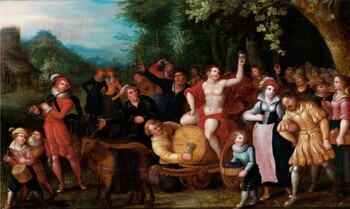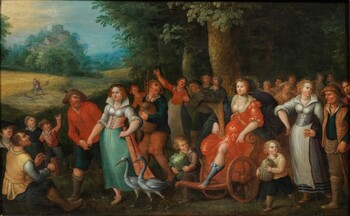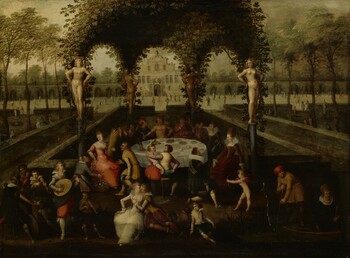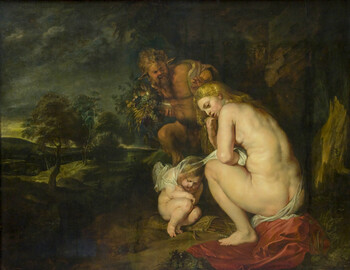Sir Peter Paul Rubens
Venus Frigida
Oil on panel : 145,1 X 185,6 cm
Signed and dated “P.P.RVBENS.F.1.6.1.4.”
Antwerp, Royal Museum of Fine Arts
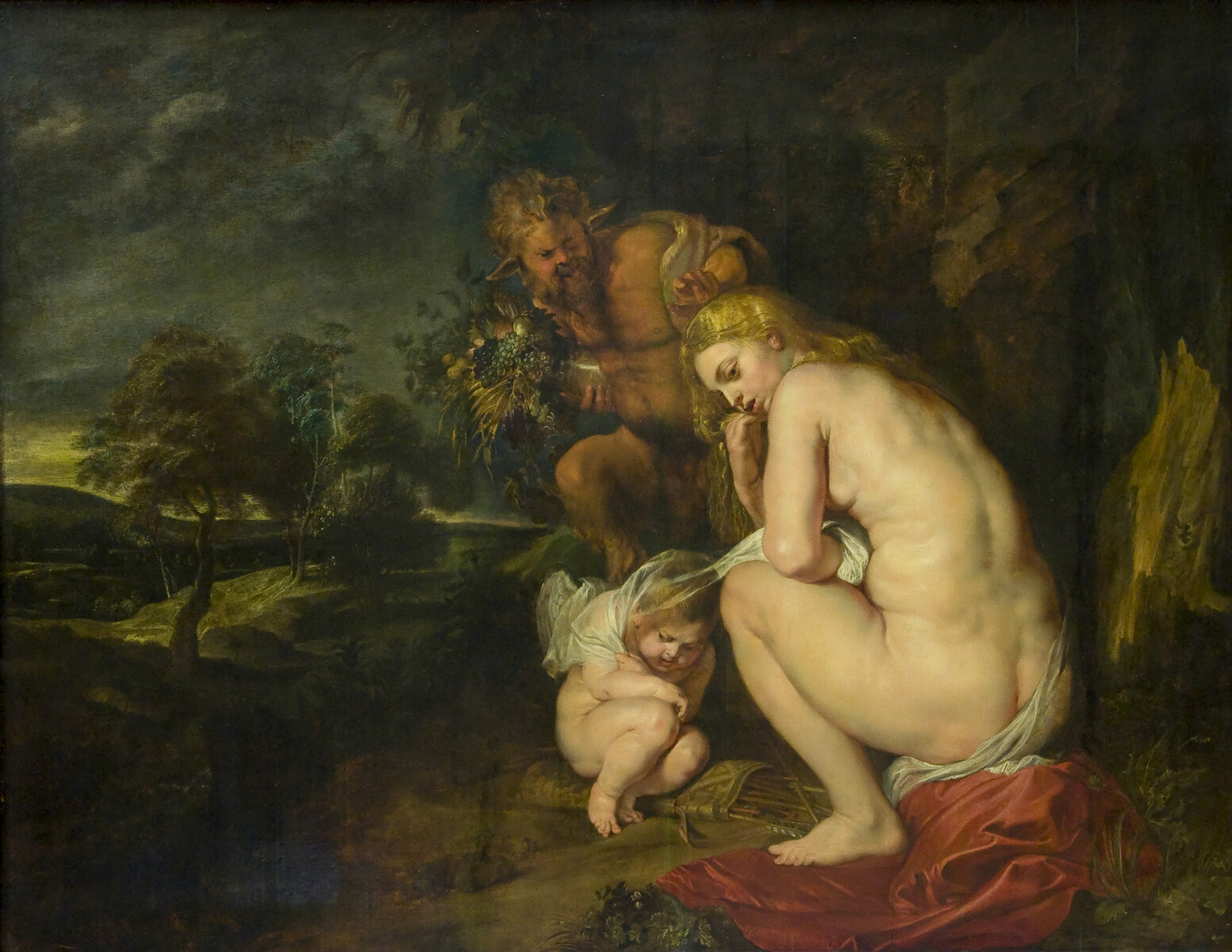
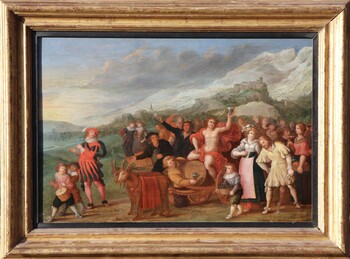
In short
Our pair of paintings, dating from the first half of the 17th century, must have been painted after two lost compositions, originally belonging to a set of three paintings by Louis de Caullery. These represented our Triumphs of Venus and of Bacchus, plus a Triumph of Ceres: these are the Classical gods of Love, Wine and Agriculture. These three gods were linked in an ancient Roman proverb that became popular during the 16th and 17th centuries: “Love needs food and wine”.
Louis de Caullery was born in the small Flemish village of the same name, that belongs today to France. He studied and worked all his life in Antwerp.
About our pair of paintings
Our paintings represent two of the most important, I should say most influential, gods of Classical Antiquity: Venus and Bacchus. Venus is the goddess of Love, Bacchus of Wine.
In our first painting Venus is riding a chariot pulled by doves amidst a river landscape in Summer. She is holding a hart, symbol of love. Above her Cupid is aiming an arrow at a couple that will fall in love. And clearly so will more couples in this painting.
In our second painting we witness in a mountainous landscape the triumphal entry of Bacchus, riding a chariot with a wine barrel that is pulled by two billy-goats. These animals stood for wild, untampered, lustful life, as did Bacchus.
There must probably have been a third painting linked to our pair: it should represent the triumph of Ceres, goddess of Agriculture. During the 16th and 17th century an ancient Roman saying linking all three gods became a popular proverb: “Love needs Food and Wine to thrive/to survive” Love refers of course to Venus, Food to Ceres and Wine to Bacchus. “Sine Cerere et Baccho friget Venus” is the original Roman motto, which came to us through the text of a comedy, “Eunuchus” by the Roman playwright Terentius, who lived during the 2ndcentury BC.
This proverb inspired many Mannerist and Baroque painters in the Low Countries, who made all sorts of variations on this theme. The literal representation of the Latin saying is the “Venus Frigida”: a nude, freezing Venus who is hesitating to eat or drink.
A single, but small, representation of “the Triumph of Ceres”, attributed to Louis de Caullery, sold at Schloss Ahlden in May 2021, underlines my theory. In 1999 it had already been offered for sale at Sotheby’s London, then still given in full to Louis de Caullery. I would like to connect that painting to a painting of the same dimensions, representing the Triumph of Bacchus, sold at Hampel in July 2017. The composition of the figure staffage (not of the landscape) is the same as in our “Triumph of Bacchus”. Both these two paintings and our two paintings must go back to possibly lost original compositions by Louis de Caullery.
The high quality of the mountainous Alpine landscape in our Triumph of Bacchus clearly testifies of the influence on de Caullery’s of his master, the landscape painter Joos de Momper II (1564 – 1635). In our pair of paintings one can clearly see the conventional Flemish Mannerist colour scheme: everything looks natural, but there is a codified transition between a brown foreground, a green middle and a blue background.
About Louis de Caullery
Flemish painter
Caullery circa 1580 – 1621 Antwerp
Caullery is a small village in Northern France, 20 km from Cambrai, that belonged to the County of Flanders. Following the conquest by Louis XIV this SW part of the historic County became officially part of France with the Treaties of Nijmegen in 1678.
Painter of genre scenes, allegorical subjects, Carnival scenes, architectural scenes and landscapes.
He was a pupil of Joos de Momper II in Antwerp in 1594 and Master in the Painter’s Guild of Saint Luke in Antwerp from the year 1602/03 onwards. He remained his complete career in Antwerp.
There is no proof for a trip to Italy, but his paintings are clearly inspired by Italian art, and also by the School of Fontainebleau.
Caullery regularly collaborated with Abel Grimmer.
His paintings are characterised by an optimistic, pleasant, agreeable atmosphere.
Why should you by this pair of paintings?
Allegorical representations of love and wine, what more do you need?

